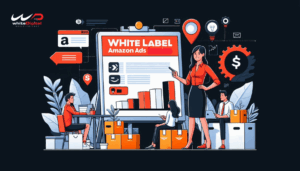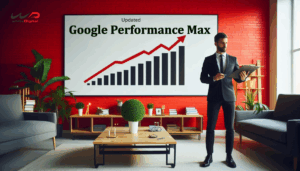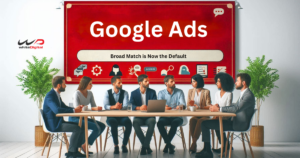Have you ever found yourself grappling with the intricacies of a Google Ads campaign, questioning why things aren’t clicking the way you want them to? As advertisers, we understand outsourced Pay-Per-Click (PPC) is not without its challenges.
In our pursuit to optimize and elevate our client’s conversion, we’ve identified some external factors that sway the effectiveness of our client’s Google Ads campaign.
In this article, we aim to speak about those external factors, demystifying the complexities surrounding Google Ads campaign. By the end, you’ll not only recognize these challenges but also appreciate how rectifying them can pave the way for a more streamlined advertising endeavor.
Is Price Tag scaring OFF your Google Ads campaign:
Nowadays, shoppers are very fickle when it comes to the price of a product, and a slight increase or decrease will impact a shopper’s purchasing decision.
Before marketing a product in a Shopping campaign, make sure of the four P of marketing – Product, Place, Promotion, and more importantly Price matters.
Also, remember this – Google gives preference to a product if it’s cheaper than the competitor!
This can increase or decrease the impression volume by reaching 40%, even without any bid changes.
This puts a tight spot on us. How can we find the right balance of price and profitability and, more importantly, how even track our competitor’s prices?
The great news – Google ad’s feature called Price Benchmarks helps us how to compare prices with other products. We can use this information not only to develop bidding strategies but also to determine if a drop-off in performance for a product is due to being out-priced by a competitor.
Website UX sinks your Google Ads Campaign:
For a successful Google Ads campaign performance, a good and optimized landing page or website is important. The website is the anchor for a successful campaign.
Our client needs a landing page that doesn’t just wave hello but screams, “Stay and check out what we’ve got!”. Client destination should captivate, convert, and stand out amidst the competitors.
A website needs:
- Pleasant Design – the site needs to look good, and modern with a peaceful background (especially white). It shouldn’t be with elaborate content, make things simple and better.
- Call to Action – the site needs prominent buttons, short-filling forms, and phone numbers that lead visitors to desired outcomes.
- Mobile friendly – Over half of all visits take place on phones, and phones have a high conversion rate, the mobile site is often more important than the desktop site.
- Page Speed – Waiting for a page to load for too long is frustrating. Slow page load is an interruption experience for the user and often they simply don’t have the time to wait. According to Google, 0-5 seconds is good, but an extra 5 seconds of page load can increase a website’s bounce rate by more than 20%.
- Pop-Ups – Don’t indulge too much pop-up bar on the site, it affects page appearance and page loads.
Diagnose your Google Ads Campaign Offers:
Sometimes, the Google Ads campaign will underperform due to offers. If it doesn’t match your customers’ expectations, and as a result, they just don’t feel the pull. Well, it might be because offers are not as appetizing as they could be.
Google Ads campaign heavily relies on the attractiveness of offerings to the target audience. If offers lack uniqueness, fail to address the pain points of the audience, or are not competitive in the market, users may be less inclined to click on your ads.
Imagine you’re running an ad for a restaurant, and your ad is just like any other ad in town – no unique offers, no exciting twists. Your customers have plenty of options, so why should they choose yours? If your offers lack special spice – be it exclusive discounts, value-added services, or unique selling points – your audience might just scroll without taking a bite. So, make the offers as tempting as a mouthwatering dish, and watch those distinctive offers capture audience attention and improve the overall performance of your Google Ads campaign.
Leverage Competitor Activity for Google Ads Campaign Dominance:
Competition on Google has risen over the years as more companies invest in Google Ads. If your client’s business is in a competitive field, make sure that your ads on Google show first, on top of the competitor ads. Changes in competitors’ strategies, promotions, or market presence can affect the competitiveness and performance of your ads.
User Behavior Shift Impact on Google Ads Campaign:
Change is guaranteed in the fast-moving digital world. Digital developments drive the way how customers interact with businesses, which creates a multitude of opportunities and challenges for us. If the Google Ads campaign isn’t grooving along with these behavioral shifts, that could be the snag.
Personalized and relevant advertisements are more appealing, increase the intention to make a purchase, enhance the overall browsing experience, and provide valuable information to customers. An applicable Google Ads campaign should be personalized to the customer’s interest.
Seasonal Adjustments for Google Ads Campaign:
We can able to see seasonality in recurring patterns by monitoring and analyzing the data. This gives the important insights that lead to future sales success. Be able to identify important sales periods and see what customers care about and when. Stay up to date with the client’s overall industry news as well as trends.
Because user behavior, interests, and search patterns undergo fluctuations, affecting the effectiveness of white-label PPC efforts. For example, January is always a good month for gym clothing sales. Because customers have a resolution to start living a healthier lifestyle in the New Year.
It’s crucial to align your campaign strategies with seasonal trends, adjusting keywords, ad copy, and budgets accordingly. Not adapting to seasonality can lead to diminished ad relevance and decreased click-through rates.
Fix Your Brand Image for More Clicks:
Take a moment to think about our shopping habits, why do we buy certain products but not others? Most likely, we purchase a product based on our brand perception, or the way we think and feel about a brand.
This makes Google Ads campaign stuck in low traffic, and it seems how people see the brand. Know how it is – these perceptions can either fuel success or put the brakes on the efforts. If there’s a shadow of doubt or misunderstanding hanging around our brand, our ads might struggle to shine.
Catch Up with Trends and Economic Conditions for Google Ads Campaign:
Market trends and Economic conditions can heavily influence Google Ads campaign performance.
Consider your Google Ads campaign is adapted to the ongoing marketing trends. As we know video advertising is growing, not completely in the sense of general YouTube that we’re currently experiencing, but in the form of short-form video ads. With the increased competition in both Instagram and TikTok reels, there is a lot more attention going towards Shorts video ads to utilize the placement to attract the target audience.
Meanwhile, check out the targeted audience countries before building a Google Ads campaign due to the country’s rising costs and this economic crisis impacts user behavior. For instance, due to COVID-19, purchasing activity decreased, and industries such as food service, tourism, and transport were hit hard. On the other hand, medical, education, and e-commerce have grown significantly.
In short, marketing is always focused on the fact that most of your customers aren’t ready to buy now — your goal should be to target the customer, create awareness, trust, and loyalty, and when they are ready, your client’s brand name will be front.
From Add to Cart to Out of Sock: Affect Google Ads Campaign:
Product unavailability can break a customer’s shopping experience.
Every business seeks to maximize customer satisfaction and profits, but what happens when a product is out of stock?
For example, running an ad campaign for shampoo but if your advertised products are delayed or out of stock because of a supply chain issue, it can create a bottleneck in the customer journey. Finding their favorite product ‘out of stock’ turns loyal shoppers to say “I will not come here again”.
Conversely, out-of-stock items can lead to lower ad engagement, decreased conversion, and frustrated customers, ultimately hindering campaign success.
Tech Shift, Google Ads Drift:
When assessing the performance of Google Ads campaigns, it’s essential to consider the evolving landscape of technology and shifts in device usage. People are glued to their devices, switching between phones, tablets, and who knows what else. If an ad strategy isn’t catching up with these techs, it’s like trying to dance to last year’s hit song for this year’s party.
It’s necessary to stay attuned to these technological nuances and integrate them into the strategy for a more impactful and resonant campaign.
Google Ads Campaign Performance is down, don’t be scared!
When realizing the Google Ads campaign isn’t performing as well as we like, it can be frustrating, perplexing, and cause any advertiser to panic.
But don’t worry, there is a reason for the campaign’s underperformance, and fixing it is probably simpler than we think.
Take a look above at these external factors before building and maintaining a responsive and successful Google Ads campaign.













